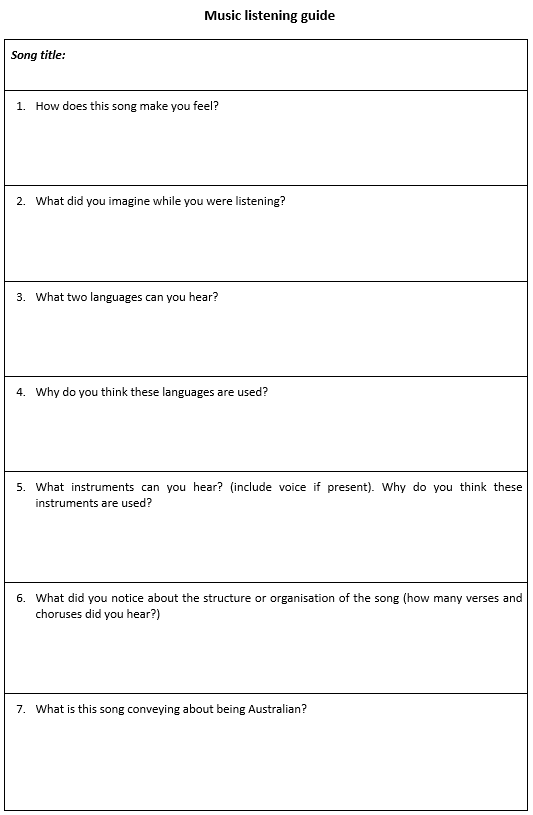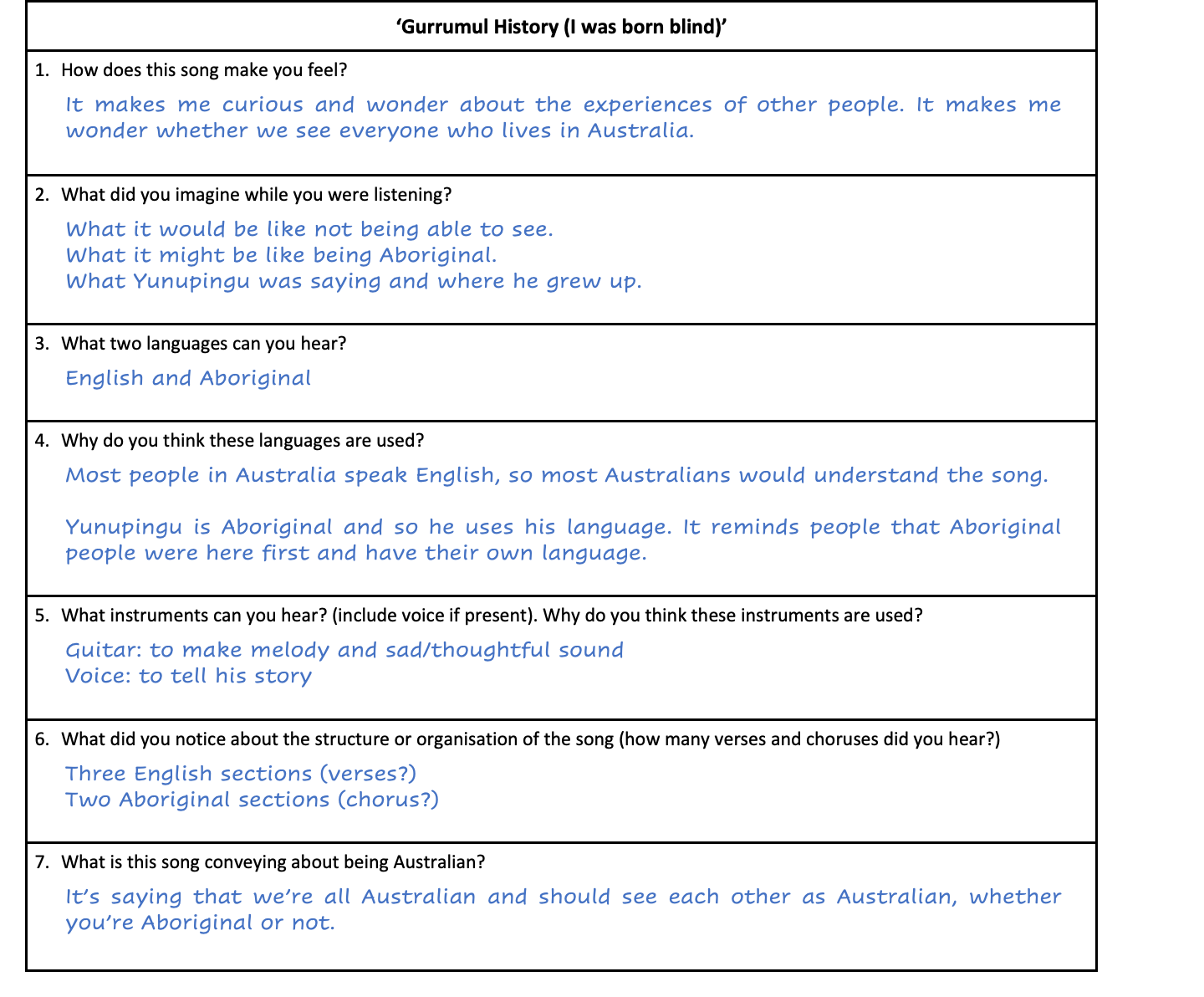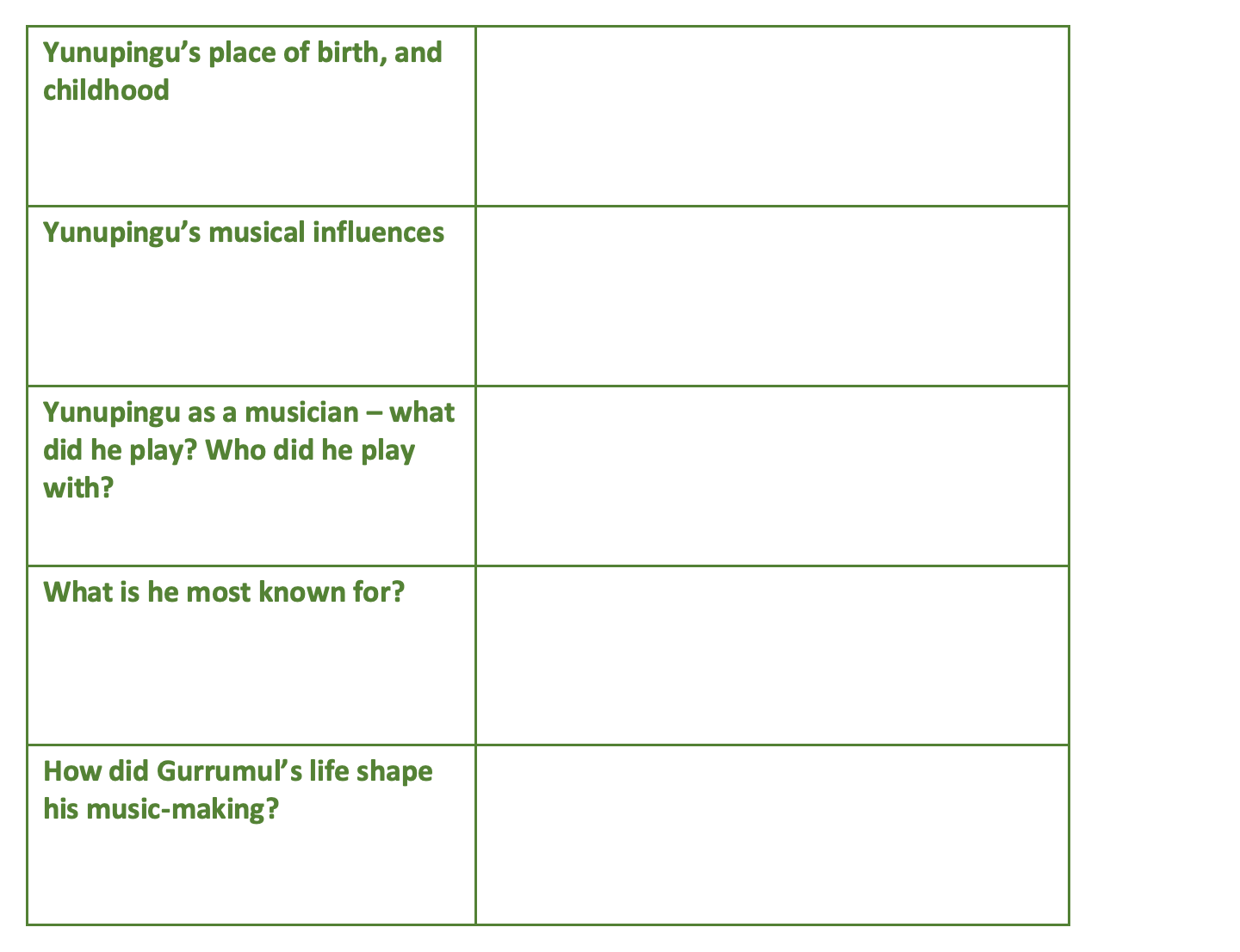'Listening underpins all music learning' (VCAA, n.d., n.p.). It forms the basis for understanding musical experiences. In particular, the ability to analyse aural experiences allows students to understand musical style, aesthetics and affect. This, in turn, informs students' musical performances.
However, listening in a music classroom is quite a different skill to listening in other school settings. What is being listened to is predominantly in the language of sounds, rather than the English language, and when lyrics are vocalised, their meanings change in relation to the song style, and the use of the elements of music, for example, melody and harmony.
Students listen to a range of works in a variety of styles to increase their knowledge of music and their ability to play in diverse styles. In classroom settings, whole pieces or extracts can be played allowing the experience of 'surprising and varied,' 'colourful and unique' music (Burnard & Murphy, 2017).
Literacy in Practice Video: Music - Rhythmic Vocabulary
In this video, the teacher introduces new rhythmic vocabulary using a rhythm grid to support and scaffold his students to organise and write complex rhythms in traditional notation. Students talk about the usefulness of the rhythm grid to visually deconstruct the rhythm into more manageable chunks: beats per bar and how it sits with the time signature.
Read the
in-depth notes for this video.
Scaffolding listening
In the following strategy, Year 7 or 8 students experience the work of Geoffrey Gurrumul Yunupingu and his acclaimed song 'Gurrumul History (I was born blind)' (VCAMUR039). This strategy can be adapted to any listening situation.
Through this strategy, students focus on how audiences make meaning from music, and on beginning to use language to express their aesthetic response to music. Additionally, students begin to learn to respond to analytic questions about music. This strategy precedes more explicit strategies which teach the language used to describe the elements of music.
To do this:
- The teacher plays the song, 'Gurrumul History (I was born blind),' to the class.
- The teacher provides students with a listening guide, such as the one below

- The teacher revises/pre-teaches keywords, such as 'verse/chorus' and 'mood,' before students complete the listening guide.

- The teacher replays the song and asks students to complete the listening guide.
- The teacher leads a class discussion for students to share their responses. The teacher encourages students to use music terminology, where appropriate.
Understanding musical contexts
For students to make meaning from and interpret music, they must understand the social, historical, and cultural contexts in which the music is composed and performed, and how musical compositions interrogate, emerge from and speak back to histories and contexts (VCAMUR039).
Reading information about musicians and their artistic intentions will support students to engage with and analyse a musical work. Much of the information about contemporary composers is available through artists' biographies, concert reviews and interviews that are on the internet in various forms.
Graphic organisers can be used to support students to retrieve and sort information that will assist them to interpret the musical work. A graphic organiser relevant to Gurrumul Yunupingu's musical career is presented below.
- After completing the exploring aural experiences strategy, the teacher distributes copies of the
Artist Biography of Geoffery Gurrumul Yunipingu written by Adam Greenberg, the
review of the documentary
Gurrumul (2018) and the
official trailer for the film.
- Students read/view the texts, and then complete the graphic organiser below, providing notes in the second column which relate to the theme or idea of the first column. Students discuss their responses in pairs before completing the entry in the graphic organiser.

- After completing the graphic organiser, the students listen again to 'Gurrumul History (I was born blind)' and review their responses to the listening guide.
- In pairs, students discuss what would they add, now, to their responses after reading/viewing information about Gurrumul's life and work. Students modify and add to their responses.
- Teacher leads a discussion of the ways that the social, historical, national, and cultural contexts of a musician inform their artistic works and the way that we interpret them.
- Teacher leads a discussion of what Gurrumul's work means for our understanding of Australian music.